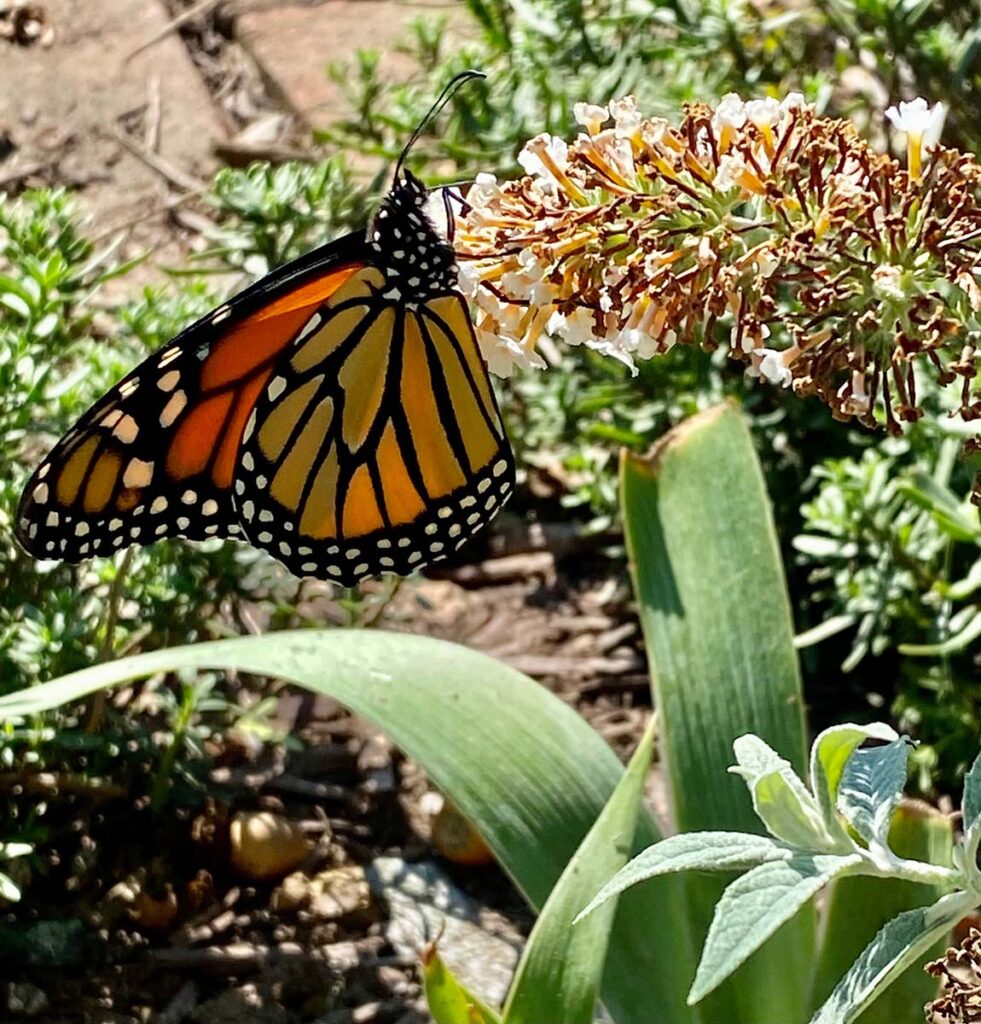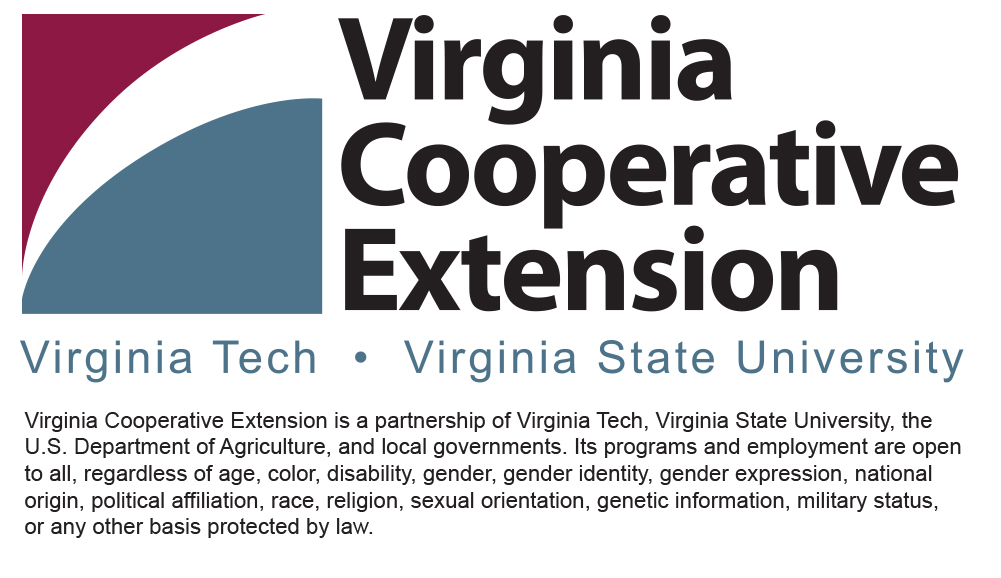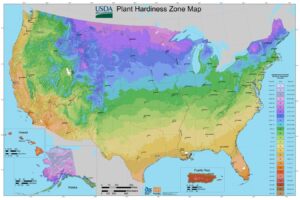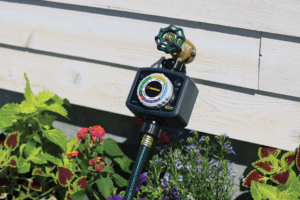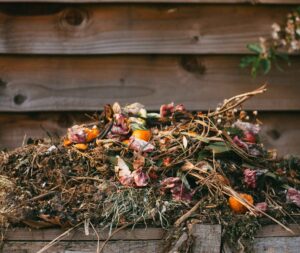Written by: Gail Fowler, an Extension Master Gardener with the Northern Shenandoah Valley Master Gardener Association, a unit of Virginia Cooperative Extension.
How to Attract Monarch Butterflies to Your Garden
There’s one thing I can guarantee about milkweed: If you don’t plant it, you won’t attract as many monarch butterflies to your garden. You might see the occasional adult monarchs, easily recognized by their stunning stained-glass pattern, flitting about to sip nectar from your flowers, but they won’t stay. Monarchs need milkweed to complete their lifecycle.
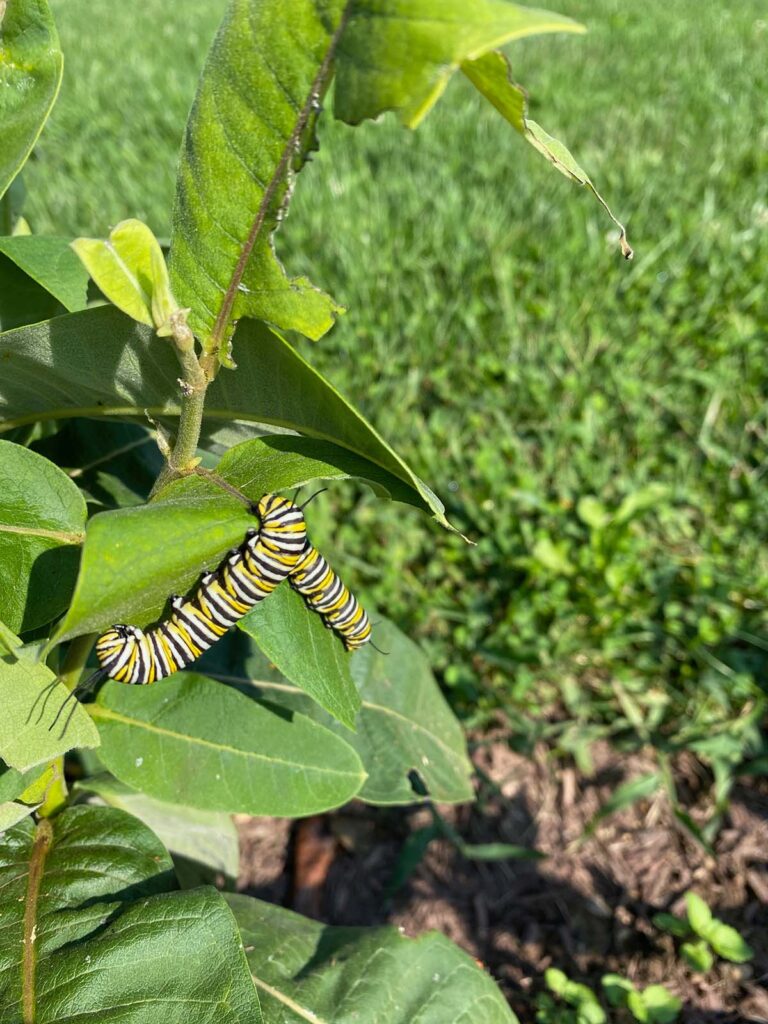
Female monarch butterflies lay eggs only on milkweed plants. This ensures that when those eggs hatch into brightly striped monarch caterpillars, those very hungry caterpillars can munch their way through the milkweed – devouring enough to plump up, evade their many predators (apparently milkweed-filled caterpillars don’t taste good), form a chrysalis, pupate, and unfold into those iconic winged insects we love to watch breezing by, fueling up on flower nectar for their long journey home.
Although juvenile and adult monarchs will feed on milkweed flowers, they also like asters, zinnias, yarrow, sedum, coneflower, phlox, black-eyed Susan, and many other flowering plants. It’s only the caterpillar version that is particular.
To be part of the monarch migration, you don’t need a lot of space. My home pollinator garden, a certified Monarch Waystation, is 200-square-feet, but half that size will work. At least two types of native milkweed (swamp, common, and butterfly, for example), a variety of nectar-producing flowers (an assortment of species, colors, and bloom times is ideal), natural shelter (keep plants close together), and a water dish (kept clean and filled) are the basic requirements to attract monarch year after year.
Monarchs soon will begin laying eggs in the northeast. So if you want to see more monarchs, get milkweed.
Learn more about how you can help monarchs prepare for their grueling journey: https://extension.psu.edu/fall-migrating-monarchs
For a complete list of plants that sustain monarchs throughout their lifecycle in the northeast U.S., read https://www.monarchwatch.org/garden/plant-list-monarchwatch.pdf
